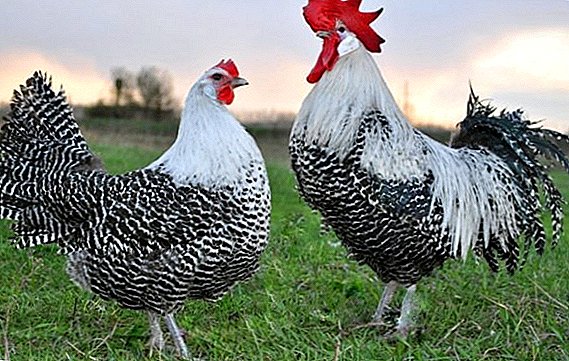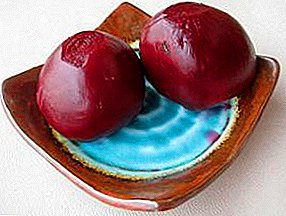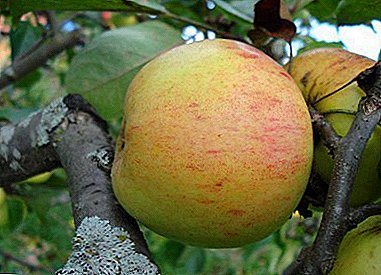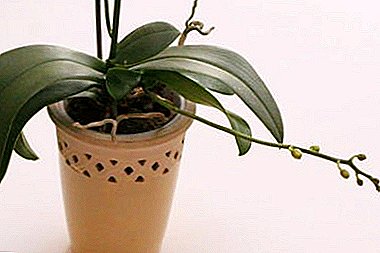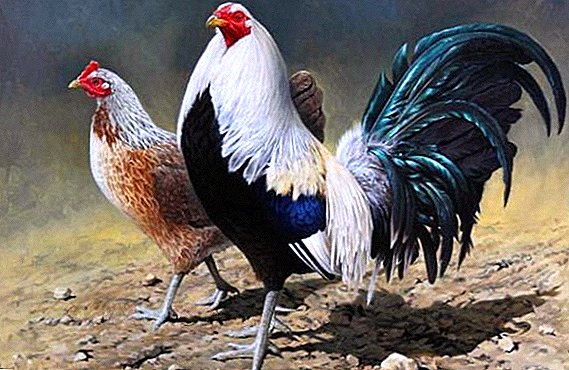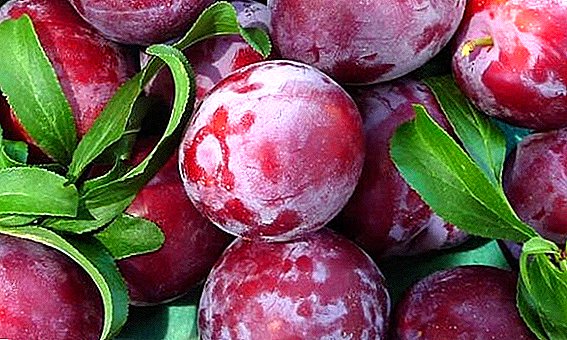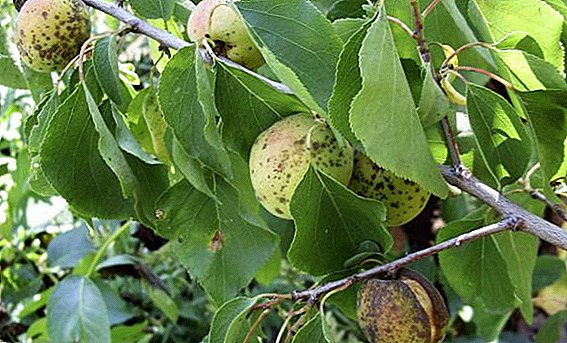 Crop failure apricots mainly associated with adverse weather conditions during their flowering period. However, this is not all the factors that affect the fruiting of apricot trees. Quite often they are susceptible to diseases and are damaged by insects. How to deal with pests apricots, we will discuss in this article.
Crop failure apricots mainly associated with adverse weather conditions during their flowering period. However, this is not all the factors that affect the fruiting of apricot trees. Quite often they are susceptible to diseases and are damaged by insects. How to deal with pests apricots, we will discuss in this article.
Butterfly butterflies
This large diurnal butterfly in itself does not threaten the plants. However, very often apricot and other fruit crops are harmed by its caterpillars. They eat the leaves and buds of the tree. The first signs of the invasion of the caterpillars are small holes in the leaves. Most often, these butterflies are found in humid places near water.  Measures to combat apricot pest. You can fight with caterpillars mechanically, that is, by collecting them manually or shaking them off the trees. It is also necessary to destroy their winter nests - dry leaves with laying eggs, which are mounted on the branches with the help of cobwebs. Usually they remain on the trees even after the foliage has fallen. Gardeners also use sprays of decoction of wormwood, tansy, tinctures of garlic, tobacco. You can resort to chemical treatment. Any insecticide will be suitable for the destruction of butterfly caterpillars. ("Antio", "Chlorofos", "Dursban", "Metaphos", "Phosphamide", etc.).
Measures to combat apricot pest. You can fight with caterpillars mechanically, that is, by collecting them manually or shaking them off the trees. It is also necessary to destroy their winter nests - dry leaves with laying eggs, which are mounted on the branches with the help of cobwebs. Usually they remain on the trees even after the foliage has fallen. Gardeners also use sprays of decoction of wormwood, tansy, tinctures of garlic, tobacco. You can resort to chemical treatment. Any insecticide will be suitable for the destruction of butterfly caterpillars. ("Antio", "Chlorofos", "Dursban", "Metaphos", "Phosphamide", etc.).
To ensure that apricot pest control by spraying is effective and safe for humans, here are a few general recommendations. So, spraying should be carried out in the morning, before the dew has dried, or in the evening, before its appearance. You need to start from the top of the crown, gradually falling down. The bottom of the tree is last processed. Particular care should be taken to spray the lower part of the leaves, where pests usually settle.
Important! When spraying, you must take precautions and first of all take into account the direction of the wind so that the pesticides do not get on the person who is processing the trees. It is advisable to use goggles and a mask to protect your breathing.
Weevil
 Weevils usually crawl on apricot from other fruit trees. These are small beetles in bright green or blue. Eat leaves, damage buds, flowers and fruits. Winter in cracks on the bark, in fallen leaves and the top layer of soil. In the case of a massive destruction by weevils, the tree already sheds half the foliage in June.
Weevils usually crawl on apricot from other fruit trees. These are small beetles in bright green or blue. Eat leaves, damage buds, flowers and fruits. Winter in cracks on the bark, in fallen leaves and the top layer of soil. In the case of a massive destruction by weevils, the tree already sheds half the foliage in June.
Control measures:
- collecting beetles by hand or shaking off the litter every morning;
- wood processing with the preparations "Decis", "Inta-Vir", "Kinmiks" and others (preferably alternated);
- cleaning and destruction of fallen leaves, buds with brown caps, mummified fruits;
- autumn digging of the soil in a pristvolny circle.
Important! If you are treating trees for the first time or with a new drug, then it is better to try it on a single plant. The processing of other plants of this species begin no earlier than a day.
Yellow plum sawfly
One individual of the caterpillar of this Hymenoptera is yellow-brown in color and capable of destroying six fruits. In addition to apricots, sawflies infect plums, cherries, cherries and other stone fruits. The larvae eat the pulp of the ovary.
 Control measures. To get rid of the sawfly, they recommend spraying with any preparations from garden pests. With a massive lesion, repeated treatment after flowering is possible. Since plum sawflies winter in the soil under the tree, it is necessary to process the tree trunk circle.
Control measures. To get rid of the sawfly, they recommend spraying with any preparations from garden pests. With a massive lesion, repeated treatment after flowering is possible. Since plum sawflies winter in the soil under the tree, it is necessary to process the tree trunk circle.
Slaves
This beetle damages the bark of the trunks and branches on the apricot. It is a small, up to 4 mm, dark brown insect. As a result of its detrimental effects, the trees become weaker, and gum formation is formed on them.
Control measures. To prevent and destroy these pests, you should follow the rules of agronomy and care of fruit trees. During the exit of the colonies, spraying with Chlorophos or Metaphos is recommended. In the case of a strong spread of beetles, re-treatment is necessary after two weeks.
Goose
 Almond on apricot, alas, is not uncommon. This is a small beetle with a long nose. Gnaws the passages in the kidneys and fruits. Eggs are laid directly in the fruit pulp, which contributes to their rotting. In winter, it goes into cracks in the bark, under fallen leaves, or in the upper layer of soil under a tree, where it can live for several years.
Almond on apricot, alas, is not uncommon. This is a small beetle with a long nose. Gnaws the passages in the kidneys and fruits. Eggs are laid directly in the fruit pulp, which contributes to their rotting. In winter, it goes into cracks in the bark, under fallen leaves, or in the upper layer of soil under a tree, where it can live for several years.
Control measures. Before flowering, it is necessary to spray Karbofos, Metafos, Ambush, Aktellik and others. Re-processing is possible after flowering with the use of drugs recommended from plum moth.
Pliers
Like most stone fruit, apricot infects the tick. If in the spring the leaves of your tree become silvery, then most likely it is the mite larvae shed. After 20 days, they grow and themselves continue to lay the larvae. In the fall, they lay eggs for wintering.
Control measures. Before bud break, treatment can be carried out with "Nitrafen" or "Olekuprit". When buds appear, they are sprayed with any of the acaricides ("Metaphos", "Colloidal Sulfur", "Forfamid", etc.).
Important! It is better to alternate the preparations, as mites and other pests eventually produce immunity to frequently used pesticides.If mites have heavily occupied your garden (an average of one insect per leaf), you can re-process immediately after flowering. If necessary, possible spraying in the summer - a month before harvest.
Ringed silkworm
 Ringed silkworm caterpillars are among the most dangerous pests for apricots and other fruit trees. They are able to completely destroy the foliage and damage the crop, even in subsequent years. They live in colonies in nests woven from cobwebs.
Ringed silkworm caterpillars are among the most dangerous pests for apricots and other fruit trees. They are able to completely destroy the foliage and damage the crop, even in subsequent years. They live in colonies in nests woven from cobwebs.
Control measures. Spray with insecticides before flowering. Before bud break, it can be treated with Olekuprik or Nitrafen. After flowering, when spider nests are revealed, they are destroyed - scrape, and then burned or buried two feet in the ground.
Did you know? You can fight with all sorts of pests and rodents by natural methods - by attracting insectivorous birds to the garden (nests, feeders, etc.). They are able to kill up to 80-90% of pests.
Sheet wrench
The sheet worm is a small night butterfly, which, at first glance, seems to be completely harmless. However, this insect is capable of causing great harm to trees and bushes. The butterfly itself eats the leaves, subsequently contracting them into a tube, where it shelters from dangers.
As a result of the harmful effects of caterpillars of these pests on the bark of apricot trees, cracks and growth therapy are formed. Heavily damaged trees subsequently dry out and die soon.
 Control measures. It is possible to fight the leafworm with the help of the concentrated Chlorofos solution after harvesting. The bark, damaged by the caterpillars of this moth, is peeled and burned.
Control measures. It is possible to fight the leafworm with the help of the concentrated Chlorofos solution after harvesting. The bark, damaged by the caterpillars of this moth, is peeled and burned.
Moth
The moth is a small butterfly with a wingspan of up to 1.5-2 cm, the caterpillars of which attack apricots, plums, and other fruits, and affect their fruits. In early June, she lays eggs in the ovary of the fruit or on the leaf stalks. From mid-July to August, the process of laying eggs is already happening directly on the fruit. Hibernates in cocoons in the cracks of the bark, in the soil of the tree circle, in fallen leaves.
Control measures:
- collection and destruction of affected fruit;
- cleaning and burning of fallen leaves;
- cleaning the bark on the trunk;
- Digging pristvolnyh circles;
- treatment with a 0.2% solution of Chlorofos, a 0.5% solution of Entobacterin;
- spraying with a solution of salt (1 kg per bucket of water);
- the use of trapping belts (fixed strips of fabric on the trunk, treated with a non-drying glue, to delay the progress of the tracks).
Aphid
 If you noticed that in June-July, the leaves on your apricot are curled, and the shoots are bent, try to look under the leaf. The accumulation of black insects on the lower parts of the leaf plates indicates that your tree is affected by aphids. This insect is very dangerous for apricot, because it leads to a weakening of its immunity, besides it provokes the disease by a sooty fungus.
If you noticed that in June-July, the leaves on your apricot are curled, and the shoots are bent, try to look under the leaf. The accumulation of black insects on the lower parts of the leaf plates indicates that your tree is affected by aphids. This insect is very dangerous for apricot, because it leads to a weakening of its immunity, besides it provokes the disease by a sooty fungus.
Control measures. If the tree has not yet begun to bear fruit, then it can be treated with any preparation for aphids ("Fitoverm", "Karbofos", "Fufanon"). When the fruits have already begun to ripen, there is only one method to get rid of this pest - two or three times a week to wipe the shoots with a solution of soap, soap extracts of ash, dandelion, tobacco, onion or garlic. Aphid cannot tolerate harsh odors and alkaline environments, so it is more likely to leave your garden.
Did you know? In nature, the fighters against aphids are ladybugs.
Fruit Striped Moth
Each caterpillar of a fruit striped moth can kill up to five shoots. This little moth is capable of causing great harm to almost all stone fruit. Its caterpillars bite into the buds and shoots, provoking their death.
Control measures. Treatment with insecticides (Karbofos, Metafos, Chlorofos, etc.) is recommended during bud break. Damaged shoots must be timely cut from trees and burned. Place slices handle garden pitch.
 As you can see, the apricot has plenty of enemies. The main thing - before planting apricots in your garden, arm yourself with information on how to deal with this scourge, in time to help your greenery. And, of course, do not neglect the prevention of apricots from pests. Take care of your garden, maintain it in good sanitary condition, feed it with organic, mineral and lime fertilizers. Get rid of root shoots in time, thin out crowns and remove diseased and dry branches, clean dead crown.
As you can see, the apricot has plenty of enemies. The main thing - before planting apricots in your garden, arm yourself with information on how to deal with this scourge, in time to help your greenery. And, of course, do not neglect the prevention of apricots from pests. Take care of your garden, maintain it in good sanitary condition, feed it with organic, mineral and lime fertilizers. Get rid of root shoots in time, thin out crowns and remove diseased and dry branches, clean dead crown.
Spring preventive sprays are also recommended. Tips and drugs than to process the apricot tree in the spring, a lot. We give only the most common and effective. During the period of snow melting and before bud break, spraying with Bordeaux mixture, Nitrafen, Copper sulfate, and Carbamide is recommended. All mixtures are widely represented in specialized stores. During the period of active vegetation, they are treated with Bordeaux liquid, “Zinebom” or copper chloroxide. The first spraying is carried out after flowering, the next three or four - every 10-15 days.


